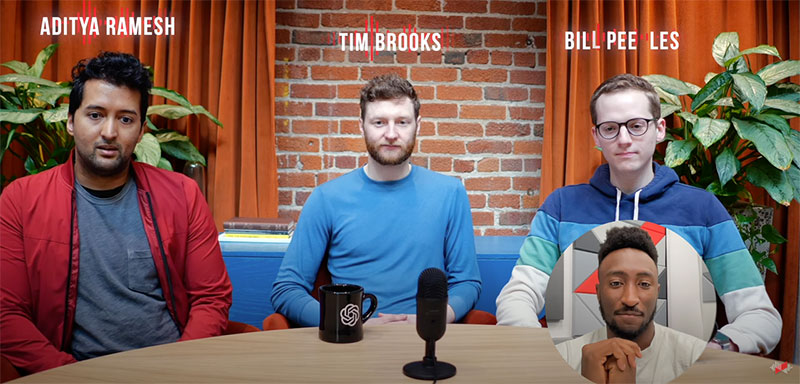In the "foreseeable future," Sora won't be released; the current version is still a research project and cannot be used on ChatGPT or elsewhere. "As for when to turn it into a product, we currently don't have any timetable. We are in the feedback-gathering stage."OpenAI’s text-to-video model Sora won’t be released soon.
The Sora team recently stated during a podcast interview that, in the “foreseeable future,” Sora won’t be released; the current version is still a research project and cannot be used on ChatGPT or elsewhere. “As for when to turn it into a product, we currently don’t have any timetable. We are in the feedback-gathering stage. We’ll definitely improve it, but how to improve it is still an open question,” said Tim Brooks, research lead for OpenAI’s Sora project.
“We need to listen to security experts about how to make this technology safer for the world. Listen to artists about how to make this technology work in workflows,” Brooks said. Early feedback indicated that users want more control over video generation, not just text prompts.
On February 16, OpenAI introduced its new AI model Sora, which creates “realistic” and “imaginative” 60-second videos quickly using text prompts. Researchers say Sora was trained on a combination of publicly available data and OpenAI-licensed data. Currently, Sora has limitations in generating hand movements, complex physical processes, and motions or trajectories over time.
While adding audio to Sora-generated videos isn’t directly on the development roadmap, it’s an option. Bill Peebles, project lead for OpenAI’s Sora, said that for the current version of Sora, OpenAI focuses on advancing the model’s video production capabilities, as before, many AI-generated videos were only 4 seconds long and of low quality. Adding audio would indeed make AI-generated videos more immersive, which the team is considering, but currently, Sora is primarily a video generation model.
AI may generate videos indistinguishable from real ones. To curb fake AI videos, Aditya Ramesh, head of the Sora team, said OpenAI plans to adjust the classifier of OpenAI’s image generation tool DALL-E 3 for Sora. The image classifier can reliably identify whether an image was created using DALL-E 3. “This alone is not a complete solution, but it can be seen as a first step.”
They also mentioned Sora’s potential revolutionary role in the creative industry: by reducing production costs, Sora can realize innovative content previously impossible due to financial constraints. Brooks said, “It’s very exciting to push the boundaries of creativity by creating new tools that empower creative individuals.”












